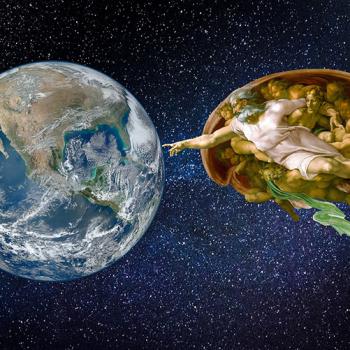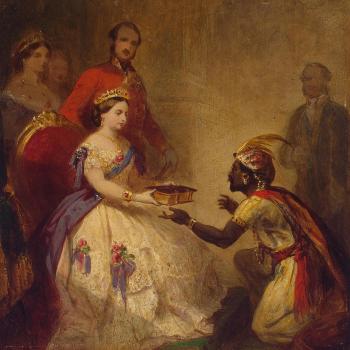Francis of Assisi is the world's most popular saint and an inspiration to our new pope. But he's also misunderstood. The late 20th-century playwright Peter Barnes once said, "If you didn't know me, you'd think I was a stranger." Francis could say the same thing to us. We don't know him, but we should, especially now.
Reality Matters
To meet the real Francis, we have to wipe clean the slate of our cultural and religious imagination and forget those half-formed legends. In his book Heretics, G. K. Chesterton wrote, "Truth…must of necessity be stranger than fiction, for we have made fiction to suit ourselves." So true! Case in point: The unreal Francis is one of the most famous fictional characters in history. So forget what you may have seen and learned in Sunday school: saccharine pictures and stories that keep us from seeing the real man.
Further hindering us is the fact that we often prefer those too-sweet images. Who wouldn't enjoy sitting in a quiet garden among the flowers, birds in song, with a Francis statue nearby? He's serene and calming—especially in cement. Saints are always easier to handle than human beings; they do what we expect of them. That's why Dorothy Day said making her a saint would be an easy way to dismiss her.
The saintly images of Francis are ones we can easily imagine inviting to tea. A statue would sit quietly and smile. A saint might tuck a napkin in his lap and mention the lovely songs the birds were singing. Perhaps he'd even interpret them for us, since he seems to understand their language. But if you invited the real Francis to tea he would insist on standing by the road to beg his bread from passers-by before joining you inside. His clothes would be ragged and dirty since he had little concern for presentation. Your neighbors would stare.
We need to see Francis's genius for what it really was and we shouldn't be satisfied to see a fake or phantom. That would be like what happened in 1911 when Franz Kafka traveled from Prague to Paris in order to visit the Louvre. He queued up to visit not Leonardo's "Mona Lisa," but the blank space on the wall where it usually hung, for it had been stolen a week earlier! Kafka (like thousands of people that year) went to the Louvre to see the legacy of the painting rather than the real thing. Let's not go to see the legacy anymore. The real Francis is far more compelling and important than the imaginary one.
The very word saint contributes to misunderstanding. Although I have great appreciation for the saints (and have written books devoted to them), it's almost a shame we use the word so often. Too many people hear saint and think piety, and piety equals a sort of otherworldly irrelevance in their imaginations. Also, some saints in history, particularly those that came after Francis's time, set out deliberately to become saints, almost the way a child today might grow up intent on becoming a "star." When reading their writings I find it difficult not to imagine a child looking into a mirror and wishing for something grand. I can imagine them studying paintings of previous saints (primarily Francis) and imitating the looks on the faces, the gestures of the hands.
Becoming a saint is a worthy goal, of course, but a spiritual self-consciousness wasn't characteristic of the real Francis. Where he modeled his actions after the Jesus he met in the gospels, some later saints read accounts of people like Francis in order to chart paths according to what the blessed are supposed to do. Francis's life actually marks a turning point in the "saints industry"; he became a sanctity icon, but it's important to realize that, for him, it was just a path of conversion.
The stories of Francis's life are often seen as episodes of saintliness. They were actually experiments of an under-confident man. Francis was always a bit uncertain; he frequently questioned his own motives; this is why we like him so much. And those quixotic, "saintly" things he did were simply, in his time, experiments in Gospel living. Francis's life demonstrates that Christianity is much more than institutions, catechisms, and sacraments—it is also techniques and practices. He was always saying to his brother friars: come along, I'll show you how.
Six Aspects of His Spiritual Vision
What Francis did and said 800 years ago was not only for the Church, or people of faith, but for all people, and this begins to explain why he was so popular even back then. The same is true of Pope Francis, today. You've probably noticed that unlikely groups of people—atheists, Buddhists, and certainly disaffected Catholics—are among those listening attentively to the pope speaking in ways they understand, practicing a Catholicism that they recognize as meaningful and important for the world. We recognize, when we see it, how being Catholic can also be beautifully catholic.




